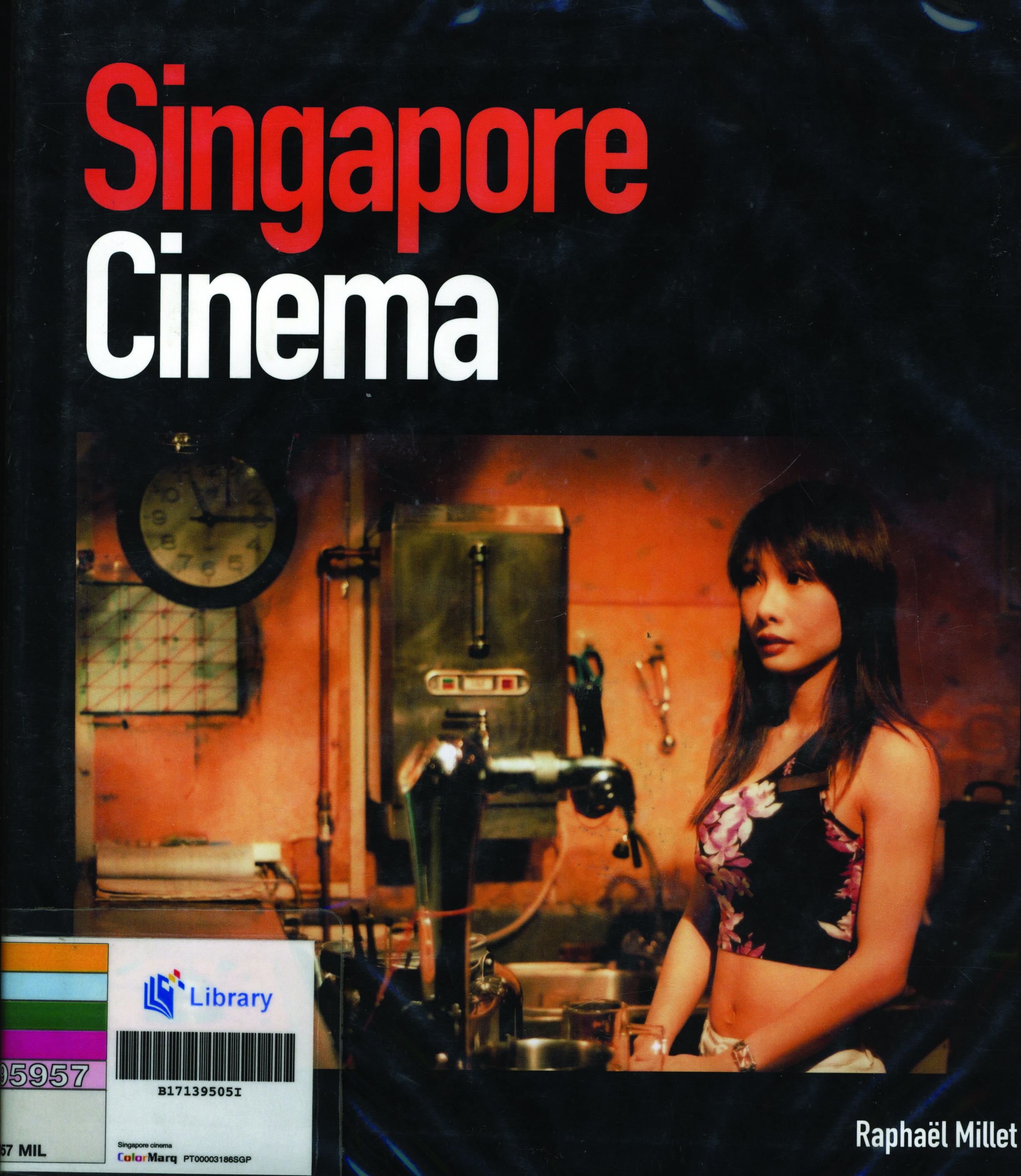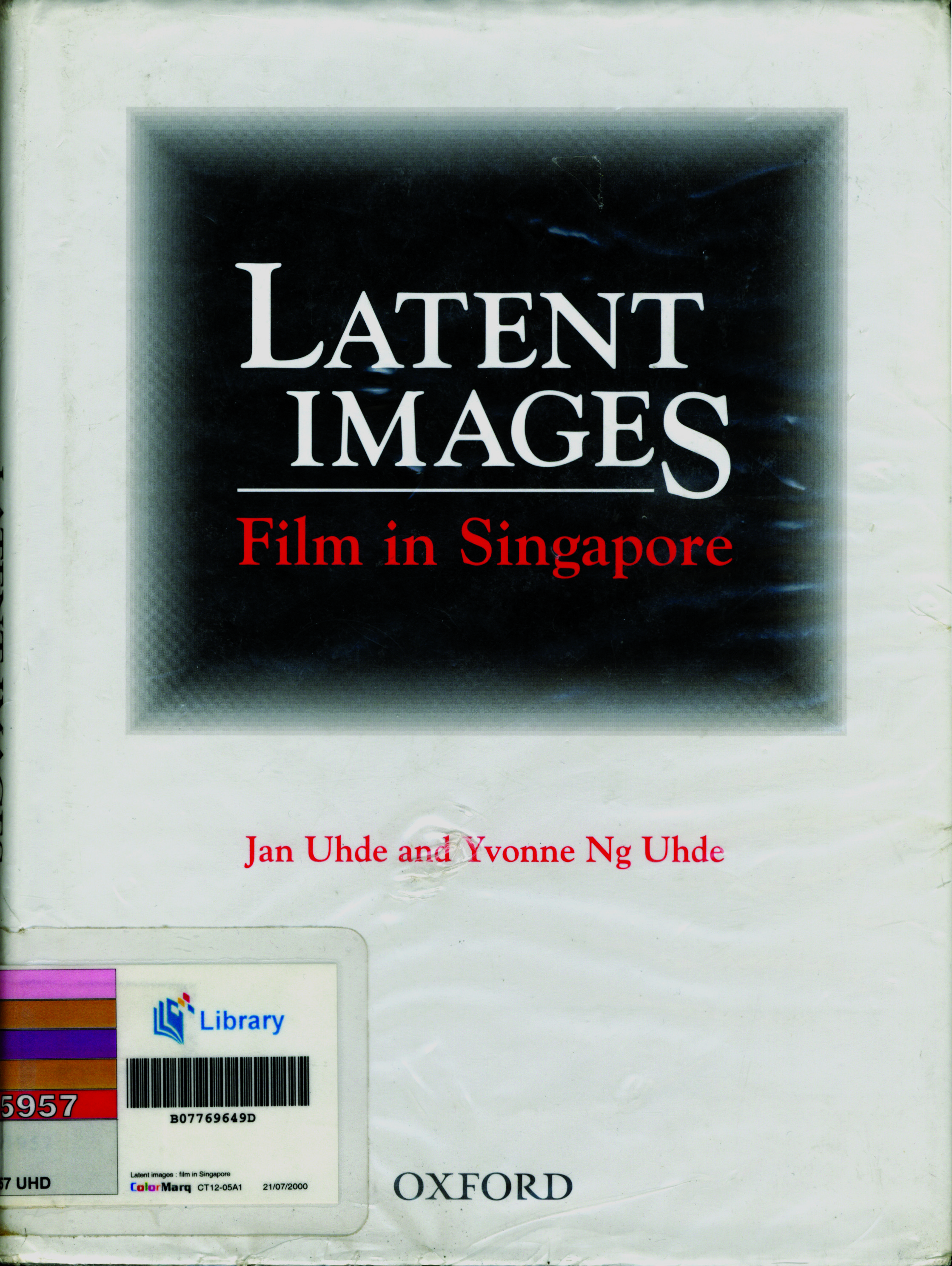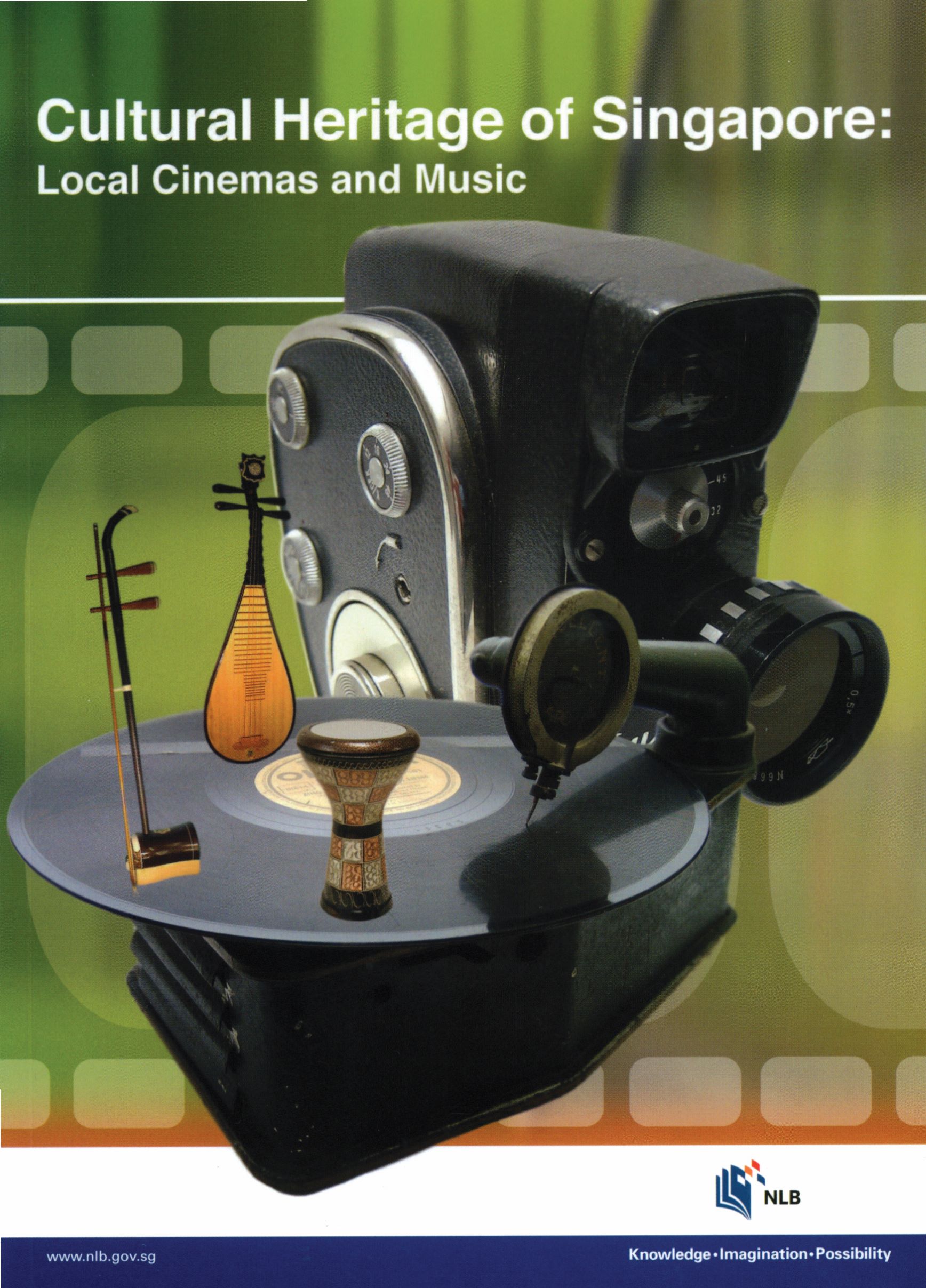A Comparative Study of Film Criticism on Singapore Films in Post–1965 Singapore
Lee Kong Chian Research Fellow Tan Chee Lay investigates both the macro and micro aspects of film criticism published in English- and Chinese-language newspapers and journals.

Introduction
Film criticism plays a role in contributing to the growth of the film industry, as well as to the cultural, educational and even social fields. Film criticism in different languages and contexts, be it journalistic criticism that appears regularly in newspapers or magazines, or scholarly criticism in academic journals, can in fact serve as important and sometimes indispensible platforms to evaluate, promote and even influence films and film productions.
The aim of this bilingual study is to comparatively investigate both the macro and micro aspects of film criticism published in English- and Chinese-language newspapers and journals. The research concentrates on the critical essays and reviews on Singapore films that were published after 1965. Various aspects of film criticism in both English and Chinese will be examined, as well as their content. In addition to promoting interaction between English and Chinese films and critical writing communities as well as international English and Chinese readers, this bilingual study also hopes to reach out to international performing arts in both the East and West. The bilingual aspect of the study also further enhances the distinctive culture identity of the multicultural and multilingual Singapore society, and thus plays a role in laying the foundation for progress towards a more artistically dynamic nation.
A Brief History of Singapore’s Film Industry
Singapore’s cinema industry can be traced back to the mid-1920s and mid-1930s, when multi-ethnic and multicultural influences began to take root in filmmaking. The peak years of Singapore film industry, in terms of production, spanned from 1947 to 1972. The industry flourished and was dominated by two major film studios: Shaw and Cathay-Keris studios. Both studios had their own facilities such as film sets, studios and editing rooms. Shaw’s Malay Films Productions churned out almost 160 films from its Singapore studio from 1947 until its closure in 1967.
Furthermore, many local individuals and organisations started venturing into film production during the late 1950s to 1970s. This led to a surge in the number of local film studios and companies. This phenomenon was partly due to the strong nationalistic sentiments that developed just before Singapore’s independence. People began to talk about films made by Singaporeans for Singapore.
However, the film industry declined significantly after Singapore’s independence in 1965. Rapid modernisation and the popularisation of television and foreign movies in Singapore brought about great changes to public tastes and lifestyles. Furthermore, lack of governmental support, closure of studios, and stricter censorship laws contributed to the halt of local film production at the end of 1978.1
Revival of the Singapore film industry came gradually, with Singapore’s government recognising the need to revitalise the film industry during the late 80s. After the long hiatus, the first Singapore feature film was produced in 1991: Medium Rare, which unfortunately was not very well received, partially due to the director being British and the lead actors being American. The industry started picking up only in 1995, with the release of Eric Khoo’s Mee Pok Man. Since 1995, there has been a constant production of local films. The revived Singapore cinema from the 1990s was characterised by short and feature films, shot predominantly in Chinese and occasionally in English. These films are deeply rooted in reflecting the urban lifestyle, with a strong focus on life in public housing.2 Names such as Eric Khoo, Jack Neo and Royston Tan became synonymous with Singapore films. From Table 1, it is clear that the Singapore film industry has seen a significant revival.

The rise in local film production took a dip before making a gradual increase. A strong upward trend took place from 1994/95 onwards. Notably, 1998 saw another surge in the number of local films produced. This could be attributed to the box office success of Jack Neo’s Money No Enough, which could be considered to be a great confidence booster for local filmmakers.
Definition of a Singapore Film
Defining a Singapore film has always been a tricky issue. One would expect Singapore cinema to be locally rooted, to reflect the various ethnicities and languages of Singapore and capture the different themes of local lifestyles. However, since the birth of Singapore’s film industry, a key characteristic of the film industry is the use of talents from different countries and cultural backgrounds. Both Shaw and Cathay-Keris’ early films featured casts and crews of talents recruited from China and India. Recent films have once again proved that “homegrown” or local films might not necessarily be filmed, produced or performed by locals. This is a situation that is fast becoming the norm in a rapidly globalised world. “Made-by-Singapore”3 films are defined as “made with Singapore talent, financing and expertise but not necessarily entirely made in Singapore or made for the Singapore audience only”.4 Though it was commented that “none of these films, however, contributed to having a Singapore identity on screen”,5 these co-productions have allowed Singapore to be placed on the global stage of the cinematic industry. Moreover, such international co-productions which involve several countries are increasing worldwide, and it has become increasingly difficult to draw a clear line as to which country a film should be credited. Film historiographers are “witnessing a weakening, if not the demise, of the traditional concept of ‘national cinema’, defined by territory, language and a homogenous culture”.6
While it may not even occur to most local audiences that the films they are watching are “Made-by-Singapore” films, such films are imperative for Singapore to move towards gaining international exposure and recognition. Besides, Singapore companies learn and benefit through their experiences of working with established overseas film production companies. Thus, this study will include film criticism on films that were produced locally, and “Made-by-Singapore” films. As 1991 marks the revival of Singapore’s film industry (refer to Table 1), it comes as no surprise that film criticisms and articles have increased significantly since then, and which are reflected in the data collected below.
Data Collection
This analysis is based on various local film reviews collected mainly from both local English and Chinese newspapers, and to a lesser degree, local journals.
This study comprises a comprehensive list of Singapore feature films. Short, non-commercial films with limited or no release, digital films or other non-theatrical films are excluded, as well as the various reviews in Chinese and English on feature films. However, there are some limitations in this collection.
First, not all films have both Chinese and English commentaries, thus it is impossible to perform an exact film-to-film comparison. Second, during the period of data collection, two new newspapers – My Paper and Today – have surfaced, and their form of writing and critique are very different in style compared with the traditional ones found in Lianhe Zaobao or The Straits Times, hence affecting the comparability of data collated. Third, I have chosen to implement a general trend analysis instead of a film-by-film analysis for this report. This is because a general trend analysis will allow us to identify the evolving trends and mitigate the fact that different films have different numbers of reviews, or may lack either Chinese or English reviews. Fourth, although a number of newspapers/journals rate films, I have chosen not to take these ratings into consideration when comparing the reviews. This is because these ratings are based on varying grading scales. In addition, there are many newspapers that do not carry any ratings. Lastly, there are a larger number of English reviews than Chinese reviews, simply because there are more English newspapers and journals than Chinese ones.
In total, this report focuses on the data of 89 feature films starting from 1991 to 2008. Correspondingly, there are a total of 237 reviews collected and researched; of these, 69 are Chinese films reviews and 168 are English reviews.
Analysis of Data
English Film Reviews Appear to Be More Encouraging Than Chinese Film Reviews
In general, both Chinese and English reviewers have, over the years and especially after the 1990s, given Singapore films rather negative reviews. However, English film reviewers appear to be relatively more encouraging than Chinese films reviewers. Interestingly, many of the Chinese film reviews before 1965, in comparison, were more encouraging in nature as they sympathised with local filmmakers while acknowledging the difficult filmmaking circumstances.7 This may explain why some readers may still hold the perception that Chinese film criticism is more forgiving or positive.

An example is the film The Leap Years. Two Lianhe Zaobao reviewers on the film unanimously gave it bad reviews.8 The review published in the Today newspaper, however, was not good but still encouraging. It ended off with: “Nice effort, hope to see more good – if not better – work in the future.”9 The effort in producing the film has been clearly acknowledged, although the results may speak otherwise.
One explanation for such a difference in treatment by English and Chinese reviewers may be the difference in cultures between the West and the East, or correspondingly, the English-speaking and Chinese-speaking communities in Singapore. In the West, failure or occasional mistakes seem to be more acceptable and thus people are more encouraging towards failures. However, in the East, mistake or failure is more often frowned upon.
Chinese Film Reviews Include Both Entertainment and Artistic Indexes
In many of the Chinese Film Reviews by Lianhe Zaobao, there are both entertainment and artistic ratings for the films. This is a more balanced and comprehensive form of reviewing films. First, English film reviewers generally give only a singular overall film review, which may not do justice to the film. Audiences frequently simply judge a film on the overall film rating, regardless of what the rating is based on. For example, a commercial film might not have a high artistic value, but is still very entertaining for the mainstream audience. By separating the artistic factor and entertainment factor of the film, audiences are better able to judge if a local film would suit their viewing susceptibilities.
One prominent example is the review of Jack Neo’s I Not Stupid Too in the Business Times. The overall review was highly negative, save for one sentence that acknowledged that it would have its target mainstream entertainment audience. However, with the film getting an overall rating of “C–”, it is possible that readers would not pick up this line but merely glance at the overall rating before moving on to the next movie rating. On the other hand, although the Lianhe Zaobao reviewer commented that the movie was overtly “preachy” and awarded it a mere two stars for its artistic factor, it still rightly gave it three stars for its entertainment factor.10 Hence audiences are better informed, and those who weigh entertainment over artistry would still consider watching the film. In this scenario, it is certain that the Lianhe Zaobao’s star ratings would stand out more than the Business Times’ one-liner that praised the film’s entertaining factor.
Having a two-tier rating system would project a more balanced view of the film production, and further offer review readers an alternative perception of the different emphases undertaken by local films. Of course, it is not to say that artistic and entertainment factors are mutually exclusive, but there are certainly different emphases as exemplified in many local productions, such as the abovementioned Jack Neo film. Furthermore, it should not come as a surprise that top box-office performers, such as I Not Stupid, are high in entertainment value but low in the artistic department; this co-relationship is apparently more palpable with the introduction of an entertainment classification system. In addition, the two-tier rating, in a way, also balances the comparatively more negative criticism of Chinese reviews as mentioned in the preceding section.
Moral Values
Chinese film reviewers tend to stress more on moral-related themes brought up by the films in their reviews compared with English film reviewers. This is likely because Chinese culture places more emphasis on advocating moral values and their various manifestations, including how they are portrayed in films. The emphasis on moral values in Singapore’s Chinese film reviews has been prevalent since the emergence of Chinese films. Much evidence can be found in Singapore Chinese newspapers during the 1950s to 1970s with the beginning of the popularity of local Chinese film productions.
A recent example of such an emphasis can be seen in the differing Chinese and English film criticism and reviews on Royston Tan’s 15. The English reviewers for this film focused on character development, Tan’s filming techniques and effort.11 However, the Chinese critics for this film went a step further to discuss the injustice in our society in general. One article even commented on how society needed to improve its treatment of marginalised teenagers and how the education system could improve to cater to these teens,12 turning the review into an educational doctrine and a social commentary as well as a film criticism.

The above example illustrates the trend of Chinese film reviews focusing more on moral values than English film reviews, a phenomenon that runs parallel to the Chinese tradition of wen yi zai dao (the text is the carrier of “the Way”, or the moral values).
Conclusion
With the current revival of Singapore-made films, it is important that a study is conducted to analyse the trends of what local film reviewers are writing about our local films.
First, it would be useful for filmmakers to understand and even utilise these trends as filmmaking is never only about filming the film itself; it is a comprehensive project. Producers of Singapore films could make use of the identified trends to target varying segments of the population and appeal to different language-speaking audiences. With this inclusion, the film would also resonate with its target Singaporean community.
Second, the average filmgoer may wish to understand contemporary local film trends and biases in making an informed choice in choosing a film to view.
Third, for scholars who are doing in-depth research papers on Singapore films, this study may highlight certain trends and even biases, which should be taken into consideration in research on local films.
Another interesting trend to note, which is outside the scope of this paper, would be the economic trends and the number of movies made. The years 1997/98 were the height of the Asian Financial Crisis. However, this period also marked a sharp increase in the number of films produced. This possibly shows a trend of films as a voice of the people or, at the very least, the use of films as an outlet for frustration. Future researchers may wish to probe further into this area.
It is hoped that this study has successfully highlighted the various characteristics of English and Chinese film reviews. With this success, we would achieve the aim of better understanding the concerns of various local film critics and the trends of local film criticism. Equipped with a stronger understanding, we would be able to read between the lines when perusing film reviews of both languages, taking in consideration the fact that the standpoints behind varying film reviews differ from time to time. Only in understanding these varying stands and backgrounds would we be able to obtain a comprehensive understanding of the film itself. In addition, different standpoints help us interpret the films in different ways. Understanding and highlighting the special characteristics and merits of Singapore film criticism will also act as cultural ballast in our nation-building efforts, which hopefully has been shown in this research, as a true appreciation of our literary heritage would strengthen Singaporeans’ sense of national identity and belonging.

Critical essays and reviews of Singapore films examine both art and commercial films, and the research of these writings is crucial and essential in promoting Singapore films. It is also one of the ways to show appreciation and give recognition to films producers, directors, individual critics, etc, whose works have greatly inspired the lives of Singaporean and international audiences, writers and readers. It is the hope that this report will not only highlight the special characteristics and merits of Singapore films and film criticism, but will also aid in recognising film and film criticism as an important makeup of our cultural identity and literary heritage.

Lee Kong Chian Research Fellow
National Library
REFERENCES
Christopher Toh, “A Big Leap of Faith,” Today, 27 February 2008, 37. (From NewspaperSG)
Hong Minghua 洪铭铧, “Xiaohai bu ben 2” bai ming shi jiaoyu pian” 《小孩不笨2》摆明是教育片 [“I Not Stupid Too” is clearly an educational film], Lianhe Zaobao 联合早报, 1 January 2006, 15. (From NewspaperSG)
Hong Minghua 洪铭铧, “Rensheng ru xi xi buru rensheng?” 人生如戏戏不如人生? [Is life not as good as a play?], Lianhe Zaobao 联合早报, 7 March 2008, 40. (From NewspaperSG)
Jan Uhde and Yvonne Ng Uhde, Latent Images: Films in Singapore (Singapore: Oxford University Press, 2000). (Call no. RSING 384.8095957 UHD)
Lin Shiwu 林十五, “15” Shaole yige ba zhang” 《15》少了一个巴掌 [“15” one less slap], Lianhe Zaobao 联合早报, 13 May 2003, 31. (From NewspaperSG)
Li Yijun 李亦筠, “Ying yi xin dian tu tuijie” 影艺新电图推介 [Film arts new digital illustration promotion], Lianhe Zaobao 联合早报, 1 March 2008.
Ong Sor Fern, “Short Cuts,” Straits Times, 22 October 2003, 6. (From NewspaperSG)
Raphael Millet, Singapore Cinema (Singapore: Editions Didier Millet Pte Ltd., 2006). (Call no. RSING q791.43095957 MIL)
Samuel Lee, “Stepping Out,” Straits Times, 4 August 2003, 6. (From NewspaperSG)
Yi Shui 易水, Ma lai ya hua huayu dianying wenti 《马来亚化华语电影问题》 [Malayanization of chinese-language films] (Xinjiapo Singapore: Nanyang yinshua she Nanyang Printing House, 1959). (Call no. Chinese RCLOS 791.4301 IXS)
NOTES
-
Raphael Millet, Singapore Cinema (Singapore: Editions Didier Millet Pte Ltd., 2006), 115. (Call no. RSING q791.43095957 MIL) ↩
-
Millet, Singapore Cinema, 114. ↩
-
One of the thrusts of Media 21, as set by Singapore’s Media Development Authority with the aim of turning Singapore into a global media hub, is to increase the export of “made-by-Singapore” products. ↩
-
Samuel Lee, “Stepping Out,” Straits Times, 4 August 2003, 6. (From NewspaperSG) ↩
-
Millet, Singapore Cinema, 95. ↩
-
Jan Uhde and Yvonne Ng Uhde, Latent Images: Films in Singapore (Singapore: Oxford University Press, 2000), 2. (Call no. RSING 384.8095957 UHD) ↩
-
Yi Shui 易水, Ma lai ya hua huayu dianying wenti 《马来亚化华语电影问题》 [Malayanization of chinese-language films] (Xinjiapo Singapore: Nanyang yinshua she Nanyang Printing House, 1959), 123. (Call no. Chinese RCLOS 791.4301 IXS) ↩
-
Li Yijun 李亦筠, “Ying yi xin dian tu tuijie” 影艺新电图推介 [Film arts new digital illustration promotion], Lianhe Zaobao 联合早报, 1 March 2008; Hong Minghua 洪铭铧, “Rensheng ru xi xi buru rensheng?” 人生如戏戏不如人生? [Is life not as good as a play?], Lianhe Zaobao 联合早报, 7 March 2008, 40. (From NewspaperSG) ↩
-
Christopher Toh, “A Big Leap of Faith,” Today, 27 February 2008, 37. (From NewspaperSG) ↩
-
Hong Minghua 洪铭铧, “Xiaohai bu ben 2” bai ming shi jiaoyu pian” 《小孩不笨2》摆明是教育片 [“I Not Stupid Too” is clearly an educational film], Lianhe Zaobao 联合早报, 1 January 2006, 15. (From NewspaperSG) ↩
-
Ong Sor Fern, “Short Cuts,” Straits Times, 22 October 2003, 6. (From NewspaperSG) ↩
-
Lin Shiwu 林十五, “15” Shaole yige ba zhang” 《15》少了一个巴掌 [“15” one less slap], Lianhe Zaobao 联合早报, 13 May 2003, 31. (From NewspaperSG) ↩

